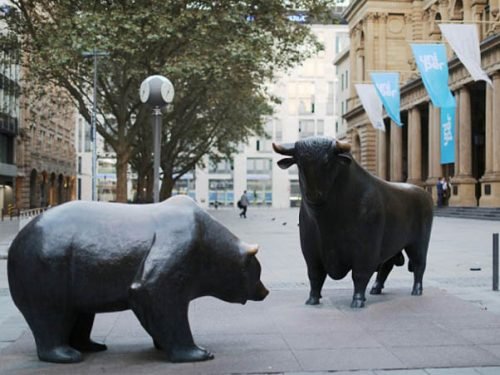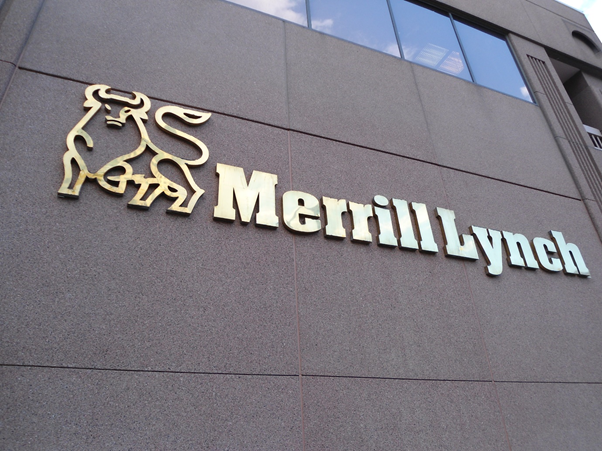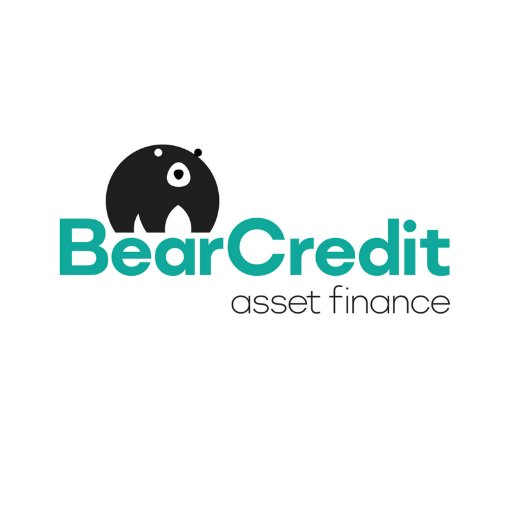
Animals are a commonly found commodity when it comes to logos. Everywhere you look, you’ll see big brands with everything from dogs and horses, to lions, tigers and eagles integrated into their logo and branding, and understandably so. For centuries, animals have been a common companion to humans, from today’s household pets, to stories and legends of noble creatures like dragons, unicorns and more.
However, while animals are popular, some industries can fall prey to overuse of the same creature in a number of leading logos. From crocodiles in clothing, to eagles in any brand that wants to portray it’s American roots, each one usually comes with it’s own reason – trading’s preference to bears and bulls certainly does. Here, we’re digging a little deeper to look at why we see so many bears and bulls in financial logos, and why brands outside of this industry are also adopting these strong creatures.
Why A Bull Or Bear?

When it comes to trading, bear and bull are far more than just animals. In fact, these two names are also given to conditions within a financial market. It’s typically used to clarify how any one market is doing, with reference to the trend line. Given that investors typically determine how this performs, it can also help us to describe how traders feel about a particular stock at any one time. The terms mean:
- Bear Market: A bear market refers to one that is currently declining, with share prices and stocks depreciating in value. Generally speaking, a bear trend is one that is continuously spiralling downwards and is suspected to keep declining in the near future. Outside of the market, we can usually see a bear market in higher unemployment levels and a slower economy. Experts suggest that this particular trend has been named a ‘Bear’ market due to a bear’s typical attack being a swipe-down motion.
- Bull Market: On the opposite end of the scale, a bull market is one that is currently seeing a positive trend. Market share prices will increase and the overall stock will be on the rise. Just like a bear market, this term will typically be used when investors believe that the uptrend is set to be continuous and, opposite to bear, employment will be on the rise. The name is thought to come from the upwards swipe of horns that a bull will use.
The use of bulls and bears in the logos for trade and finance-centric businesses is not only useful in terms of relevance but also reap benefits in their associated meanings. Bears offer flexibility for brands, giving them the ability to vary between ferocious and more ‘teddy bear’ like. In the same way sports teams might utilise a growling bear logo to portray strength and fire, or Haribo utilise the more teddy-like bear to appeal to children, finance companies can adapt the bear of choice for their logo accordingly.
On the other hand, bulls represent power, strength and momentum, all of which are valuable messages for any brand to have. In finance, this can help to portray any financial brand as leaders and the obvious choice for those wanting to get somewhere with their investments. Lamborghini, for example, use a golden bull within their logo, which can help to showcase the drive and power behind their cars – something that every Lamborghini owner and fan can attest is true of the vehicles.
Bears And Bulls In Finance Logos
With all of the above in mind, it’s easy to see why a finance company might opt for the bull or bear approach to their logos. A number of companies small, medium or large have already taken the approach, including:
Merrill Lynch

America-based investment and wealth management company, Merrill Lynch, utilise a line-drawn bull as their logo. The company is a division of the Bank of America, offering brokerage services and financial advice to anyone from any walk of life and have been operating for over 100 years. Their logo tends to convey strength and, due to the ‘bull market’ association, also portrays prosperity, which is something their customers tend to strive for.
Bear Credit

Bear Credit is a credit broker, offering finance for a variety of different areas including cars & vans, assets and business. Their logo takes a different approach to Merrill Lynch, not only in that they’ve opted to use a bear, but also in that the bear itself holds a more stylised look. It’s softer, suggesting an approachable company that is still strong and trustworthy.
These are just a few of the finance companies taking full advantage of the bull and bear trends in the stock market. As trading becomes more and more accessible, we could see this become even more prominent in the future – just watch this space.






